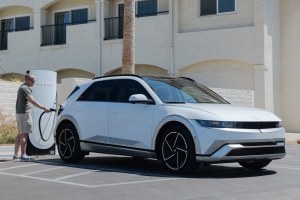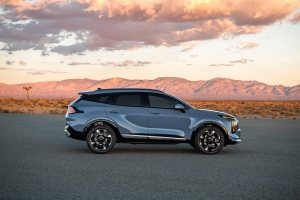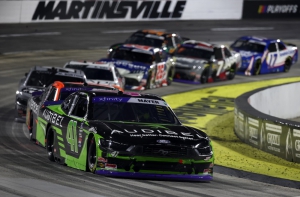This resolution reflects our shared commitment to maintaining a fair and equitable framework for long-term participation in America’s premier motorsport, one that supports teams, partners, and stakeholders while ensuring fans enjoy uninterrupted access to the best racing in the world. The agreement allows all parties to move forward with a unified focus on advancing stock car racing and delivering exceptional competition for our fans.
With this matter now resolved, all parties look forward to working together, alongside all chartered race teams, to deliver world-class events, dynamic sponsorship and partner activation opportunities, and continued growth for generations to come.
As a condition of the settlement agreement, NASCAR will issue an amendment to existing charter holders detailing the updated terms for signature, which will include a form of “evergreen” charters, subject to mutual agreement. The financial terms of the settlement are confidential and will not be released.
What all parties have always agreed on is a deep love for the sport and a desire to see it fulfill its full potential. This is a landmark moment, one that ensures NASCAR’s foundation is stronger, its future is brighter, and its possibilities are greater. We extend our sincere thanks to Judge Kenneth Bell and mediator Jeffrey Mishkin for their professionalism, and guidance throughout this process and to their jury for their time.
Quotes
Michael Jordan, Co-Owner, 23XI Racing
From the beginning, this lawsuit was about progress. It was about making sure our sport evolves in a way that supports everyone: teams, drivers, partners, employees, and fans. With a foundation to build equity and invest in the future and a stronger voice in the decisions ahead, we now have the chance to grow together and make the sport even better for generations to come. I’m excited to watch our teams get back on the track and compete hard in 2026.
Denny Hamlin, Co-Owner, 23XI Racing
“I’ve cared deeply about the sport of NASCAR my entire life. Racing is all I’ve ever known, and this sport shaped who I am. That’s why we were willing to shoulder the challenges that came with taking this stand. We believed it was worth fighting for a stronger and more sustainable future for everyone in the industry. Teams, drivers, and partners will now have the stability and opportunity they deserve. Our commitment to the fans and to the entire NASCAR community has never been stronger. I’m proud of what we’ve accomplished, and now it is time to move forward together and build the stronger future this sport deserves.
Bob Jenkins, Owner, Front Row Motorsports
After more than 20 years in this sport, today gives me real confidence in where we’re headed. I love this sport, and it was clear we needed a system that treated our teams, drivers, and sponsors fairly and kept the competition strong. With this change, we can finally build long-term value and have a real voice in NASCAR’s future. I’m excited for the road ahead—for the people in the garage, the folks in the stands, and everyone who loves this sport.
Curtis Polk, Co-Owner, 23XI Racing
My goal as a member of the Team Negotiating Committee was to help create an economic model that would create a more sustainable model for teams and create a more equitable and transparent system within NASCAR. This settlement achieves significant progress toward the Four Pillars. The result brings NASCAR and the chartered teams into better alignment and supports future growth and sustainability for all stakeholders and a better sport for the fans.
Jim France, CEO & Chairman, NASCAR
This outcome gives all parties the flexibility and confidence to continue delivering unforgettable racing moments for our fans, which has always been our highest priority since the sport was founded in 1948. We worked closely with race teams and tracks to create the NASCAR charter system in 2016, and it has proven invaluable to their operations and to the quality of racing across the Cup Series. Today’s agreement reaffirms our commitment to preserving and enhancing that value, ensuring our fans continue to enjoy the very best of stock car racing for generations to come. We are excited to return the collective focus of our sport, teams and racetracks toward an incredible 78th season that begins with the Daytona 500 on Sunday, Feb. 15, 2026.
— Release courtesy of NASCAR












